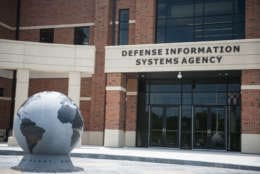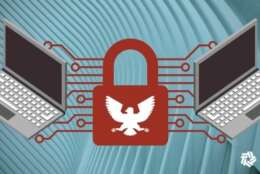Hubbard Radio Washington DC, LLC. All rights reserved. This website is not intended for users located within the European Economic Area.
On Air: Federal News Network
zero trust
-
The CIO council convened a symposium to tackle "fraud prevention and detection" after potentially tens of billions in pandemic relief funds were stolen by fraudsters.
February 22, 2023 -
With Thunderdome, DISA moves to expand zero trust to more users and add a follow-on contract for applications.
February 20, 2023 -
A panel of federal and industry experts describe each of their approaches to achieving a zero trust architecture to improve the security of systems and data.
February 13, 2023 -
The past two years have catalyzed a fundamental shift in the way that government organizations need to think about security. COVID-19 introduced the need to securely enable remote work, an ongoing ransomware epidemic shows no signs of slowing down, and the Russian-Ukrainian conflict has stoked concerns of nation state attacks.
January 06, 2023 -
But a new national cyber strategy is just the tip of the iceberg for what to expect from federal cybersecurity policy in 2023.
January 06, 2023 -
The federal government is in the middle of a once-in-a-generation overhaul of network protection, propelled by presidential executive orders mandating a switch from perimeter-based security to zero trust architecture. Agencies must include application security (AppSec)…
January 05, 2023 -
To nobody’s surprise, 2022 was another action-packed year for federal chief information security officers and cybersecurity teams across government.
December 26, 2022 -
The Cybersecurity and Infrastructure Security Agency is line for another budget boost, while lawmakers are also reauthorizing CISA’s marquee cyber defense program for another year.
December 20, 2022 -
The award is expected to help kickstart a long-anticipated modernization effort for the Joint Worldwide Intelligence Communications System.
December 14, 2022 -
Multifactor authentication and identity are a major issues in front of the federal chief information security officer council.
December 02, 2022 -
The Pentagon's much-anticipated zero trust strategy lays out an ambitious, detailed plan for how DoD will adopt a "never trust always verify" approach.
November 22, 2022 -
During this exclusive webinar, moderator Jason Miller will discuss zero trust in 2023 and beyond with agency and industry leaders.
November 22, 2022 -
OMB releases new deadlines and guidance for agencies to prepare for quantum computers capable of breaking current encryption techniques.
November 18, 2022 -
The Defense Information Systems Agency is evaluating operational assessment, operational tests and the user’s experience as part of whether it should move its zero trust pilot into production.
November 10, 2022
















